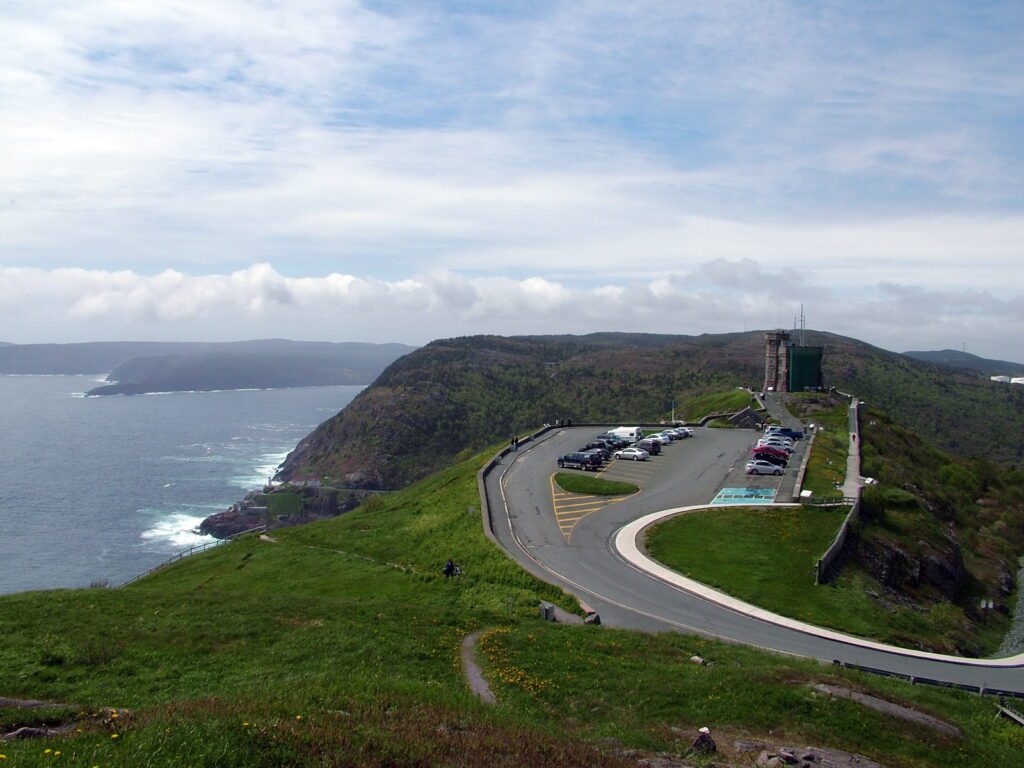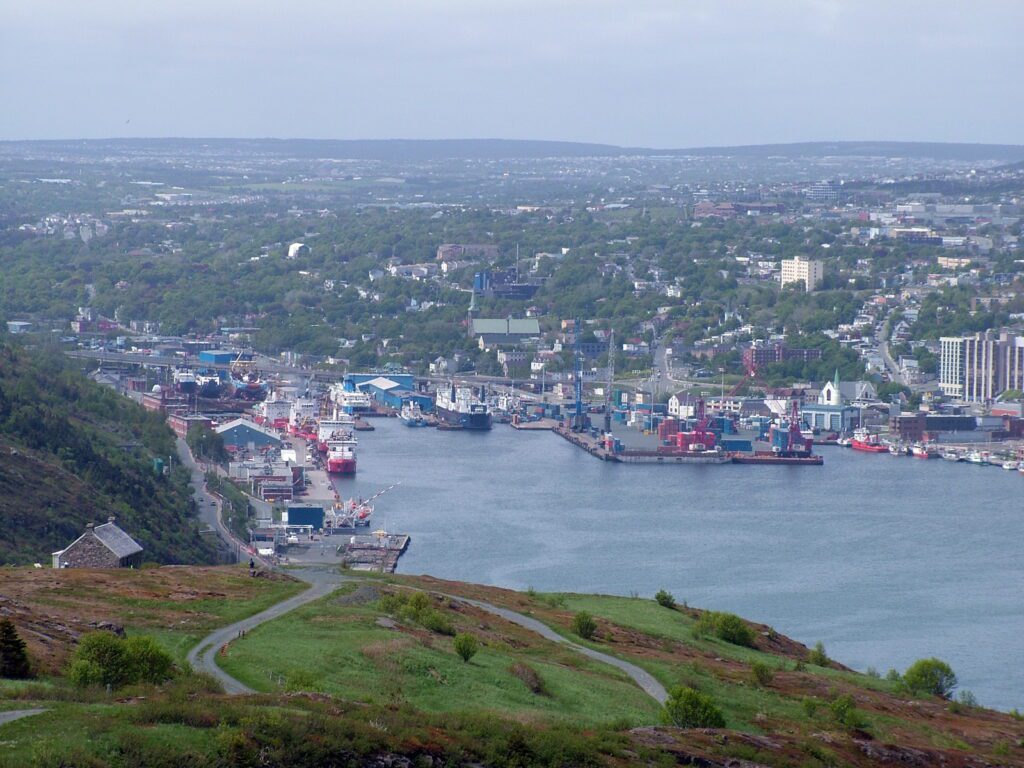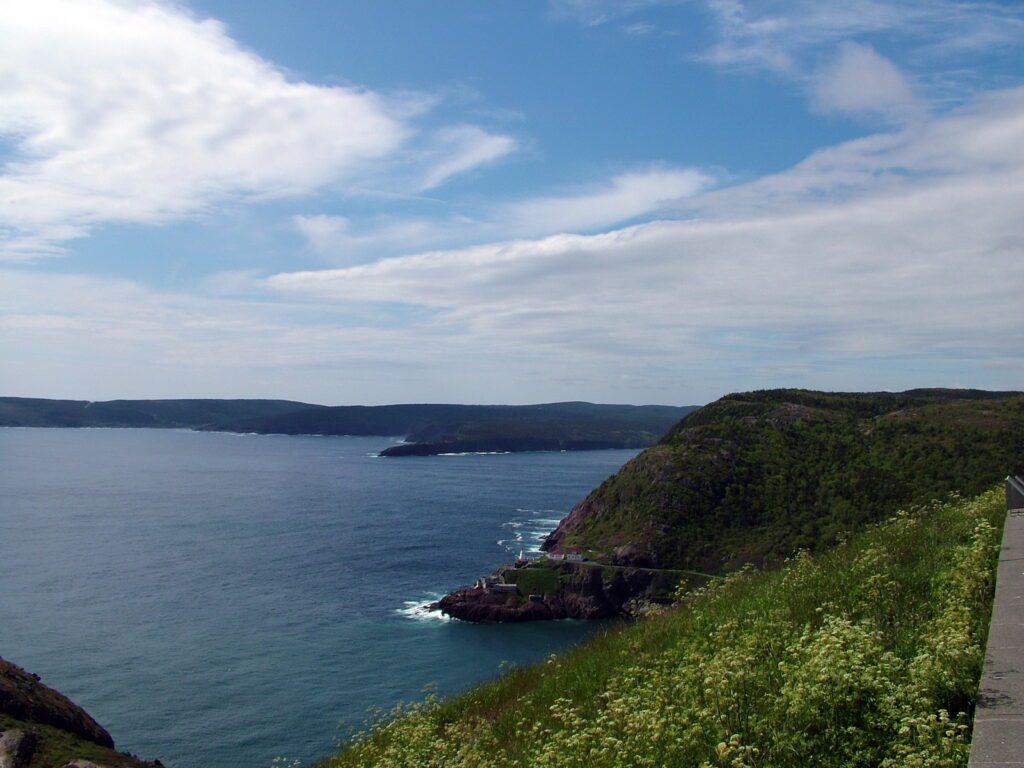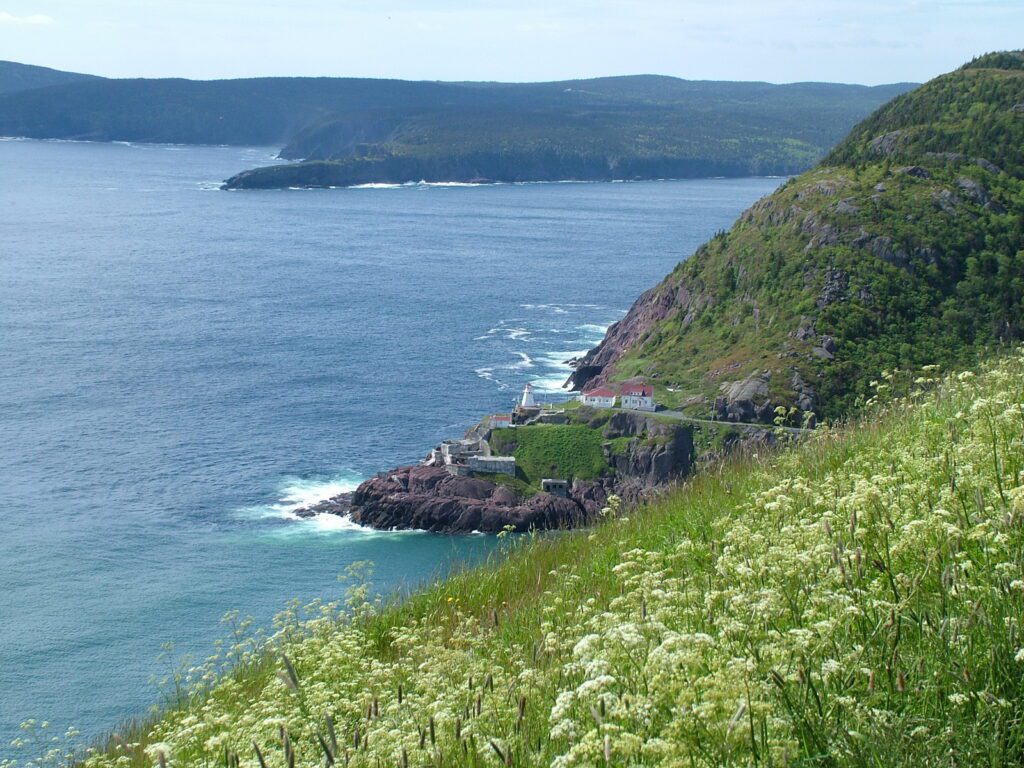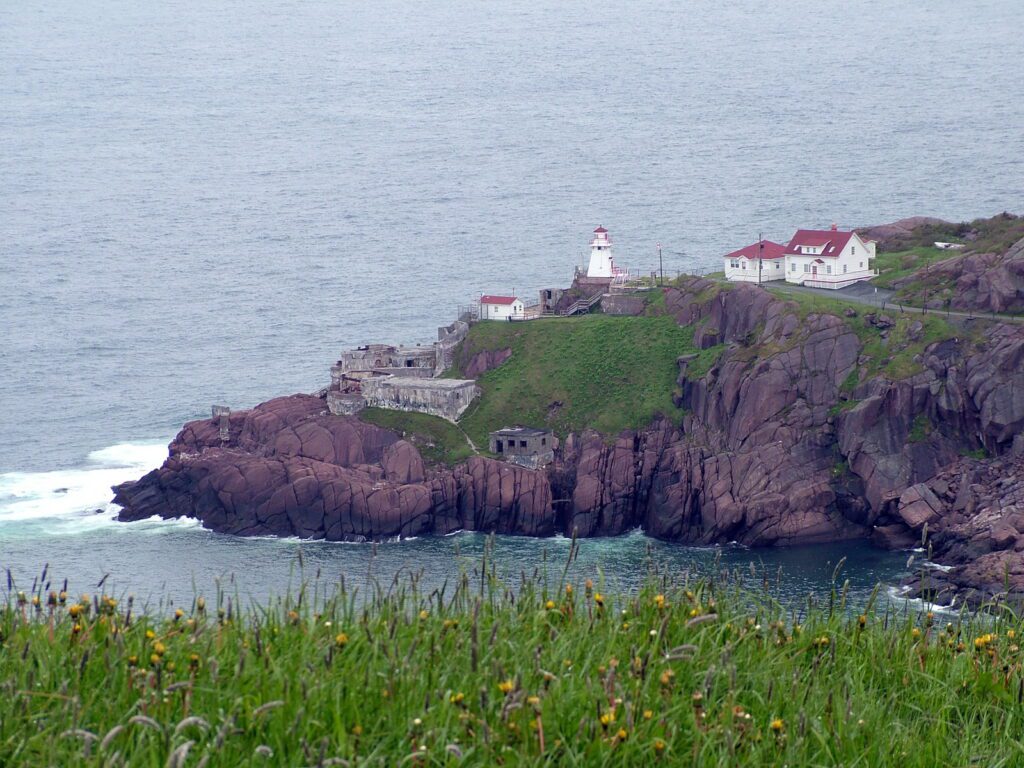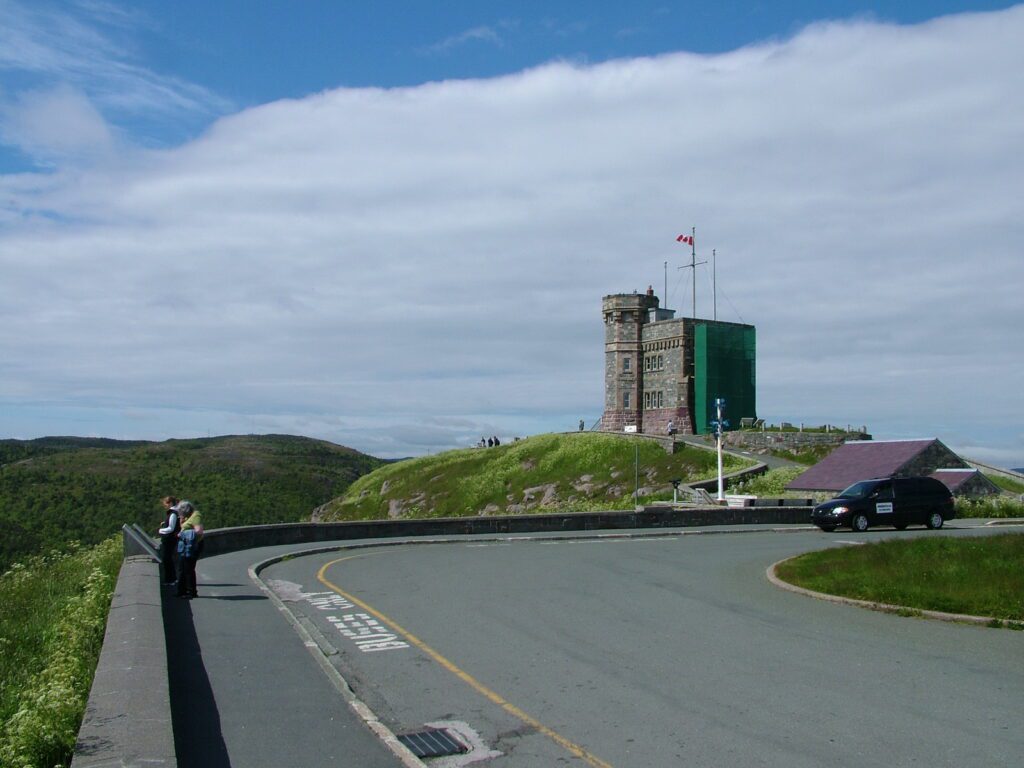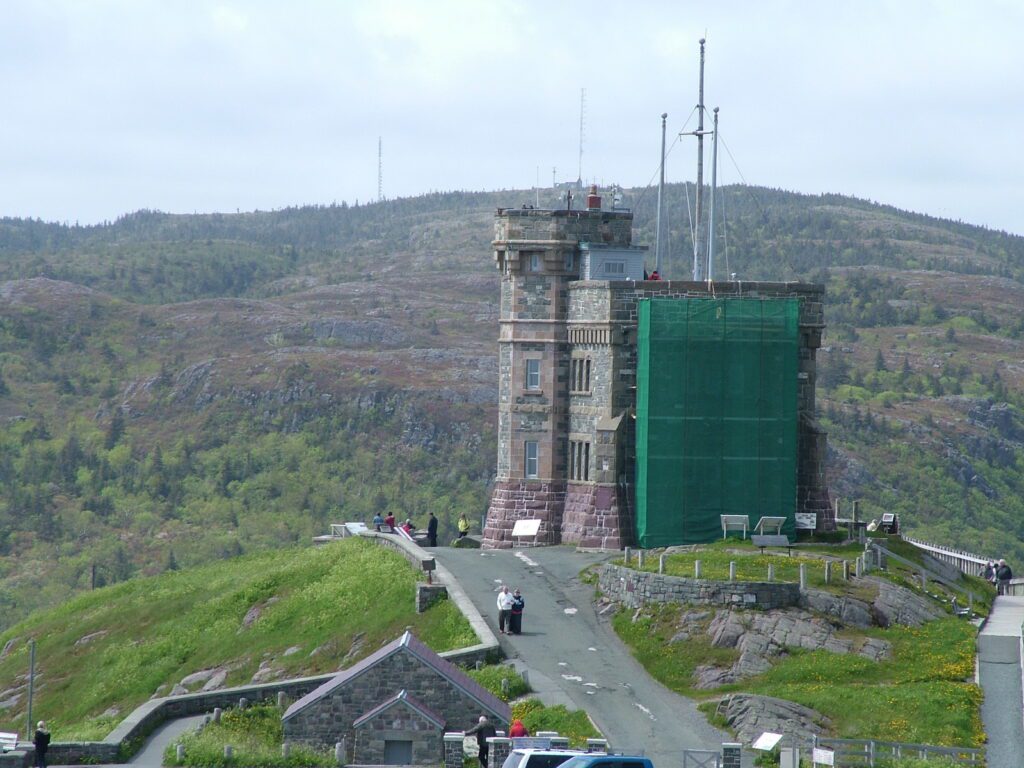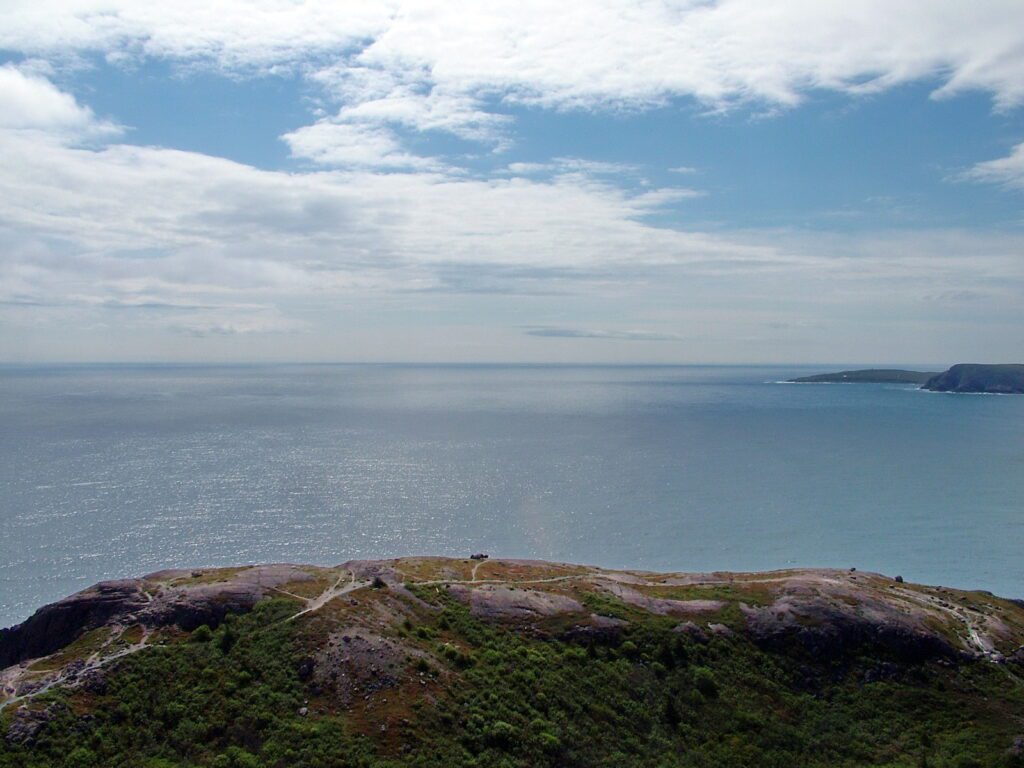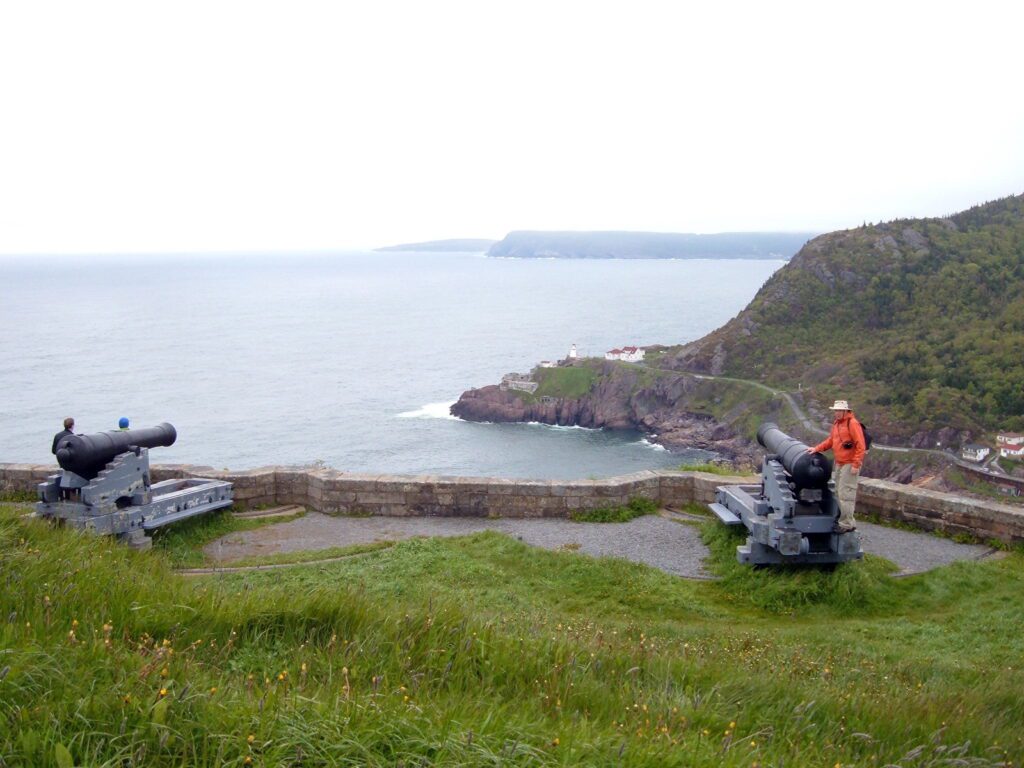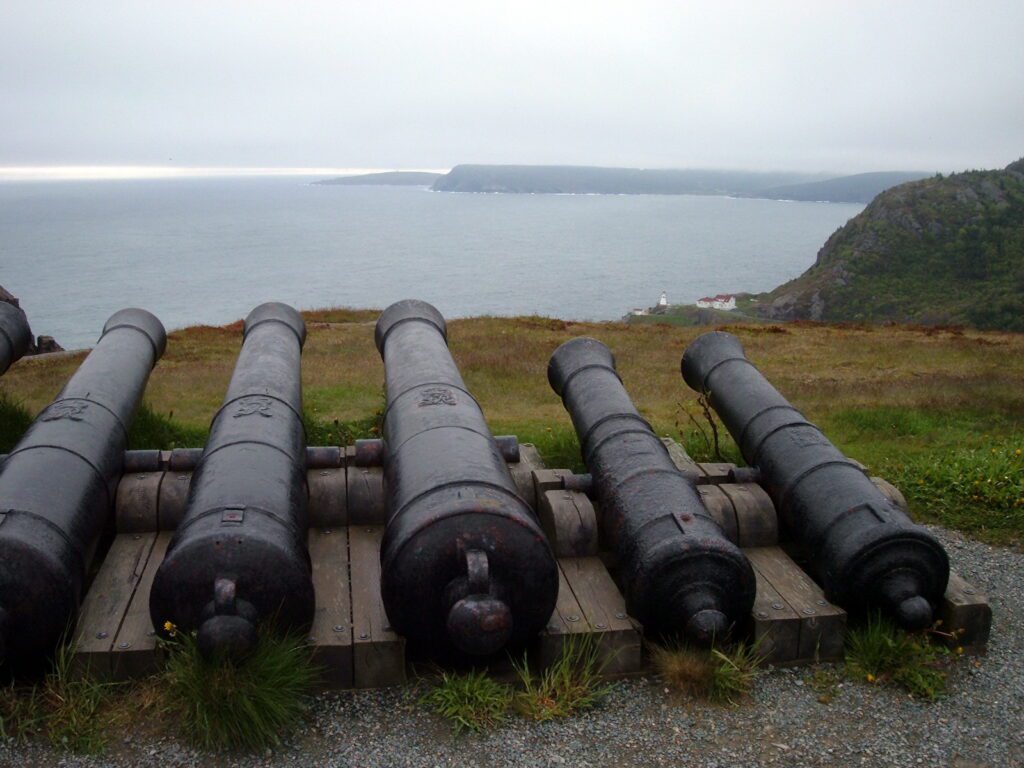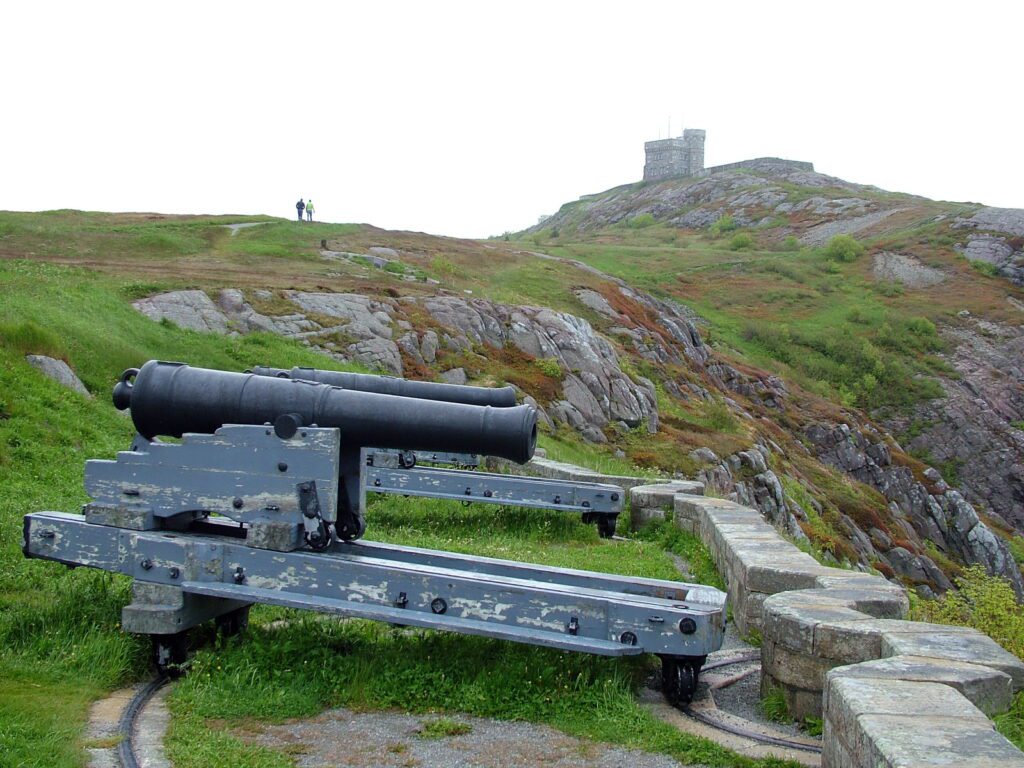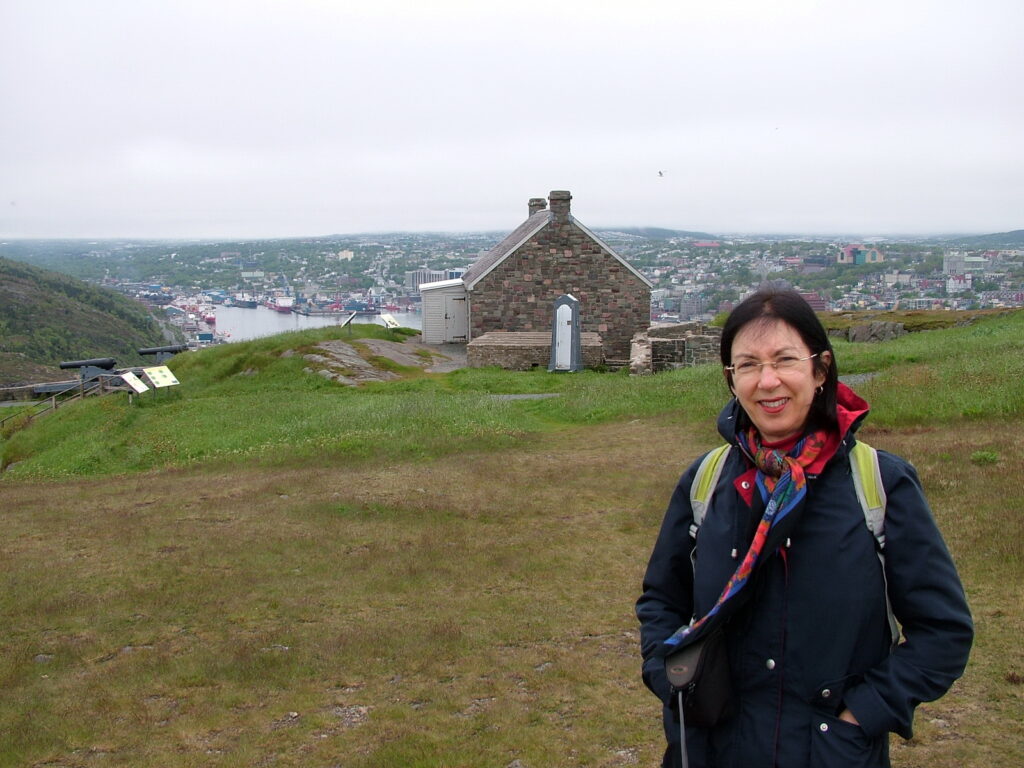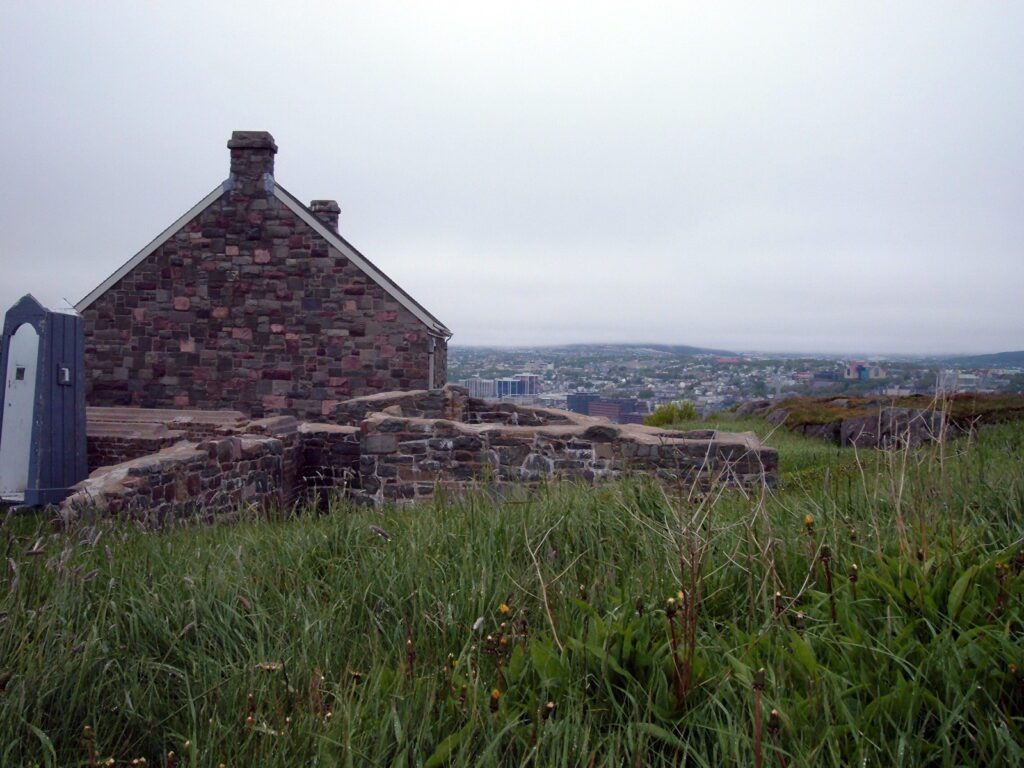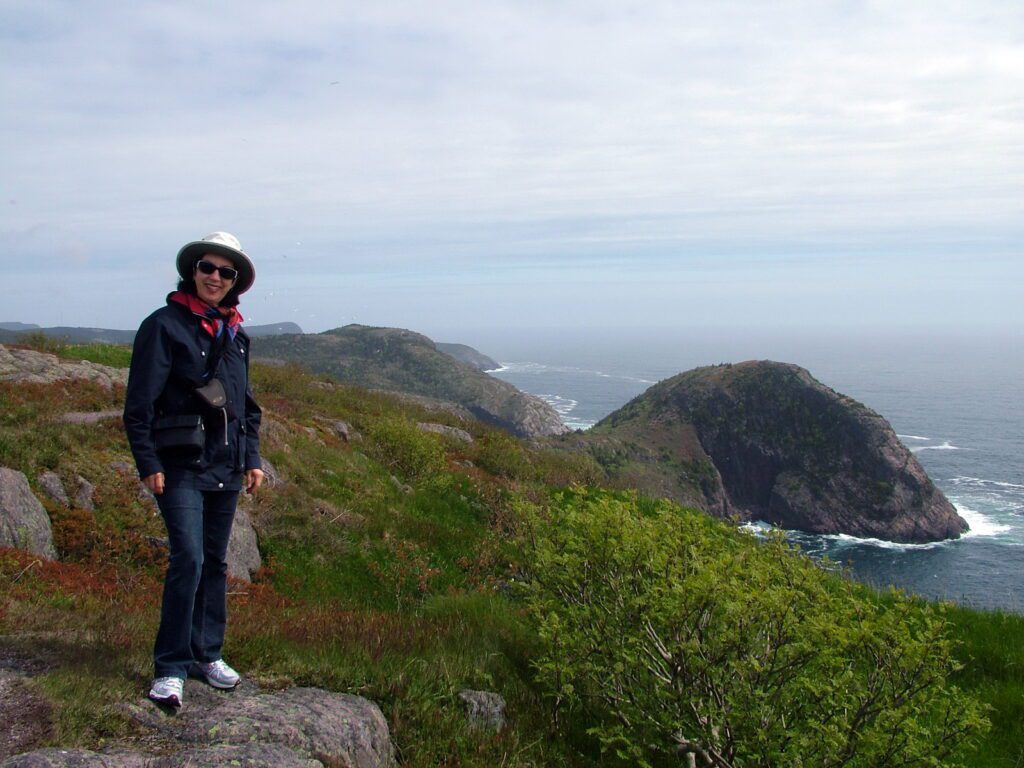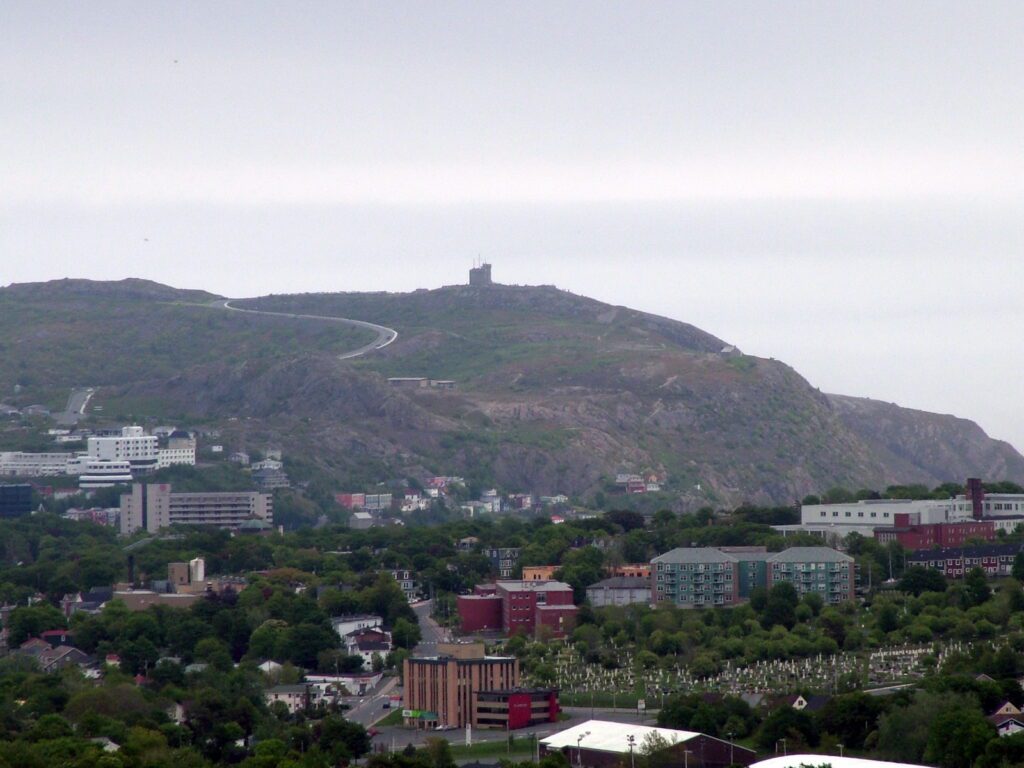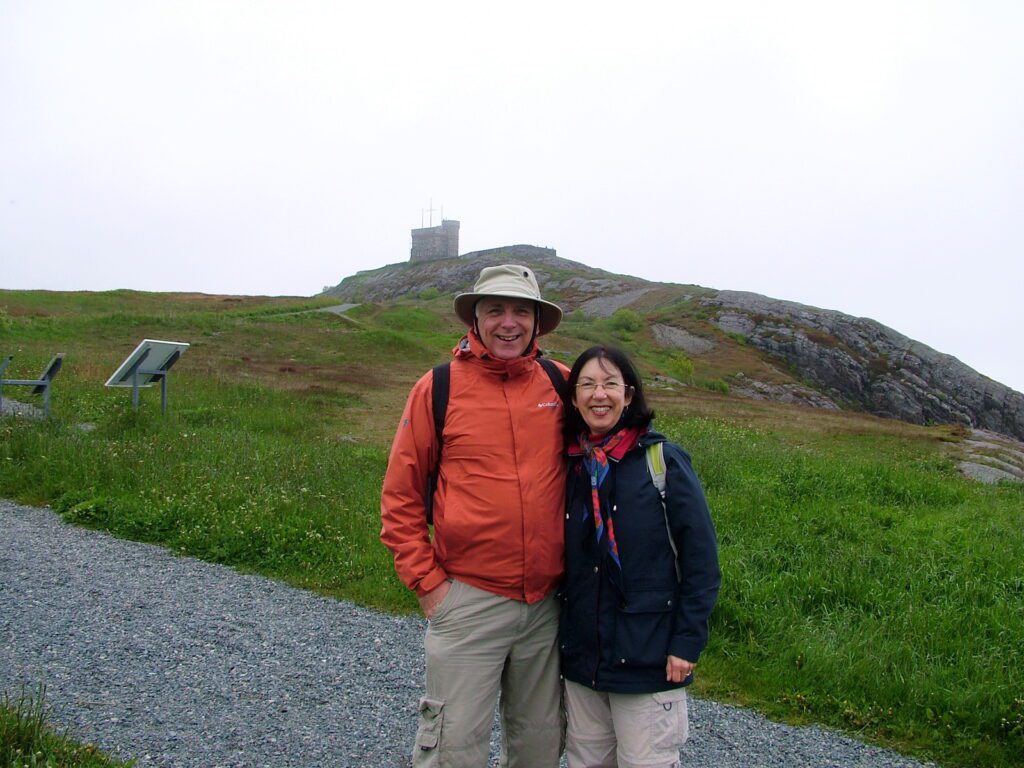One Last Spin Up To Signal Hill, Newfoundland

Our last morning in Newfoundland started out sunny with scattered clouds. After packing up our belongings and having breakfast, Bob and I took one last spin up to Signal Hill. It seemed fitting that we should end our journey where we began, and given its historical significance, Signal Hill deserved another visit.
Despite the sunshine, a chilly breeze swept over the lookout, but a grand view of St. John’s harbour and surrounds was possible due to the clear skies and lack of fog.
The promontory that rises from the ocean on the north side of The Narrows into St. John’s Harbour was originally called The Lookout. Together with the south side of The Narrows, The Lookout formed an integral part of the defences for the capital city from the 1660s until World War II. By extension, it played a huge role in the defence history of Canada.
Situated on the south side of The Narrows is Fort Amherst and a lighthouse. During the Seven Year’s War, in June, 1762, British St. John’s was captured by the French. It was subsequently retaken by the English under the command of Lieutenant Colonel William Amherst in September of the same year.
It was William Amherst who renamed The Lookout “Signal Hill” and after whom the fortifications were named Fort Amherst. The battle won by William Amherst was the final battle of the Seven Year’s War fought in North America; it was called the Battle of Signal Hill.
Gun emplacements were built at Fort Amherst during World War II to protect the harbour from German U-boats. The original fortifications built in the 1770s have succumbed to time and the elements.
It is interesting to note that the first lighthouse constructed in Newfoundland was the one here at Fort Amherst. It was built on top of the original battery in 1810. That lighthouse was replaced in 1951 with the present structure.
Signal Hill has dominated the skyline and overlooked the narrow entrance to St. John’s harbour since long before Cabot Tower was constructed.
William Amherst renamed The Lookout “Signal Hill” because it was customary practice to signal the British garrison of incoming ships by hoisting flags on the flagmast that once stood at the summit of the hill. It was over 100 years later, in 1897, that Cabot Tower was commissioned to mark John Cabot’s discovery of Newfoundland 400 years earlier as well as Queen Victoria’s Diamond Jubilee.
Signal Hill overlooks The Narrows, the only entrance into St. John’s harbour from the Atlantic Ocean. Its commanding view of the surrounding Ocean includes that of Cape Spear, the eastern-most point of North America. That is the chunky headland on the right side of this photo.
In this photo, you can see Chain Rock in the channel. Chain Rock served a couple of different purposes, first as an anchor for chains that could be used to pull ships safely through the channel, away from underwater rocks and the steep cliffs.
At different points in history, either chains or wire mesh were anchored from Chain Rock stretching across The Narrows to Pancake Rock to prevent enemy ships and submarines entering the harbour.
The first permanent structure erected on Signal Hill, The Lookout, was a military blockhouse for the purposes of tending the signalling flags. That was in 1796, and it coincides with Signal Hill being designated as the citadel for St. John’s. In that same time period, the military depended on cannons and muskets being fired on Signal Hill to keep track of their daily schedules.
As time progressed and St. John’s became a bustling port, the signalling changed focus and served the civilians. Flags raised signalled the arrival of mercantile ships. Cannons fired marked noon hour and foggy conditions.
Cabot Tower became the flag signalling tower in 1900. The cannons and flag signalling carried on until 1958 when the last official signalling mast was taken down.
In addition to the military blockhouse being constructed in 1796, the Queen’s Battery was also built.
The coastal gun battery consisted of 11 mounted guns aimed at The Narrows 350 feet below.
Completing the Queen’s Battery was a Guardhouse that sat behind the mounted guns. It housed 2 men of the Royal Artillery and their families. The original Guardhouse was replaced with this new barracks in the 1830s when Signal Hill was refortified during the American Civil War.
Another fascinating piece of history is the fact that Canada’s first trans-Atlantic telegraph cable landed at Cuckold’s Cove adjacent to Signal Hill in 1909. It was the first direct link between Ireland and Newfoundland and was the first of 8 cables to be laid by 1931.
Of note, too, is the first trans-Atlantic wireless signal that was received by Guglielmo Marconi in December 1901. It was a Morse Code transmission from Cornwall, England, the first of its kind. By 1920, a human voice was transmitted across the Atlantic Ocean, and Cabot Tower assumed the role of wireless station from 1933-1949. Signal Hill really lived up to its name! It was designated a National Historic Site in 1951 because of its significance to the military and communications history of Canada.
Bob and I were grateful for the clear day because our first visit to Signal Hill two weeks earlier had been chilly with a drizzle dampening our surrounds. Still, that day, we explored North Head Trail and Ladies Lookout Trail. That adventure is detailed in a separate post.
Frame To Frame – Bob and Jean

